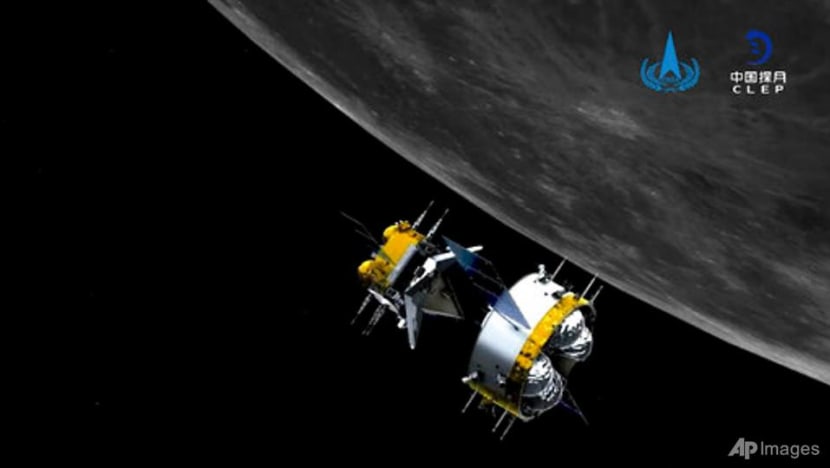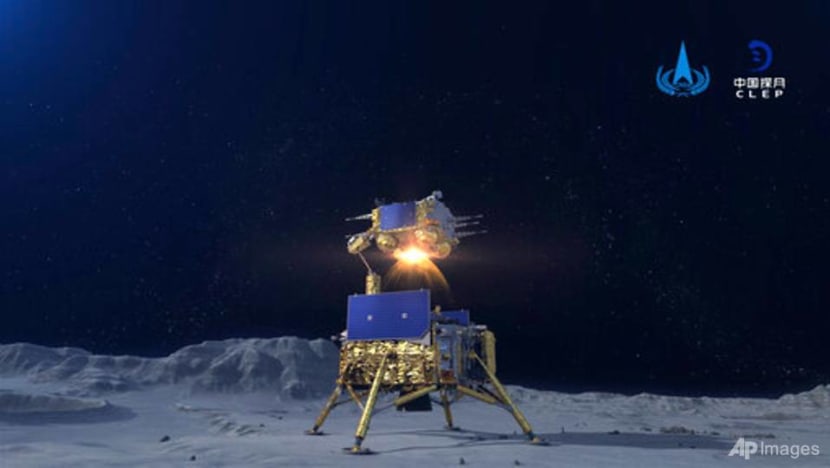Chinese capsule with moon rocks begins return to Earth

This graphic simulation image provided by China National Space Administration shows the orbiter and returner combination of China's Chang'e-5 probe after its separation from the ascender, at the Beijing Aerospace Control Center (BACC) in Beijing, Dec 6, 2020. (China National Space Administration/Xinhua via AP)
BEIJING: A Chinese space capsule bringing back the first moon rocks in more than four decades started its three-day return to Earth on Sunday (Dec 13).
The Chang’e 5 lunar probe, which had been orbiting the moon for about a week, fired up four engines for about 22 minutes to move out of the moon's orbit, the China National Space Administration said in a social media post.
READ: Chinese probe orbiting moon with Earth-bound samples
The craft's lander touched down on the moon earlier this month close to a formation called the Mons Rumker, an area believed to have been the site of ancient volcanic activity. It collected about 2kg of samples.

The rocks and other debris were obtained both by drilling into the moon’s crust and scooping directly off the surface. They may be billions of years younger than those brought back by earlier US and Soviet missions, possibly offering insights into the moon’s history and that of other bodies in the solar system.
China has set up labs to analyse the samples for age and composition and is also expected to share some of them with other countries, as was done with the hundreds of kilograms brought back by the US and former Soviet Union.
China's space program has a series of ambitious missions underway, including a probe en route to Mars. The Chang’e lunar program, named after the ancient Chinese moon goddess, has been operating the Chang’e 4 probe on the moon’s less explored far side for the past two years.
Future plans call for returning a human to the moon and perhaps a permanent moon base. China is also building a space station to begin operating as early as 2022.












